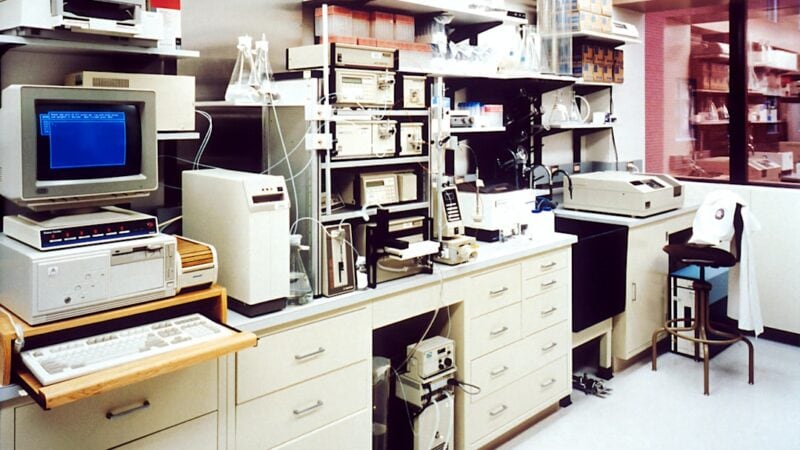Serologic Testing for Celiac Disease: Types and Accuracy

Celiac disease is an autoimmune disorder that affects the small intestine and is triggered by the consumption of gluten. It is estimated to affect approximately 1% of the population worldwide. Serologic testing plays a crucial role in the diagnosis of celiac disease, as it helps identify specific antibodies that are present in individuals with the condition. Understanding the complexities of serologic testing is essential for accurate diagnosis and appropriate treatment.
Table of Contents
Key Takeaways
- Celiac disease is an autoimmune disorder triggered by gluten consumption that damages the small intestine.
- Serologic testing is important for diagnosing celiac disease because it detects antibodies in the blood that indicate an immune response to gluten.
- There are different types of serologic tests for celiac disease, including the tTG-IgA, EMA-IgA, and DGP-IgA tests.
- Serologic testing is highly accurate when done correctly, but false positives and false negatives can occur.
- Serologic testing for celiac disease should be considered if you have symptoms such as diarrhea, abdominal pain, or anemia, or if you have a family history of the disease.
What is Celiac Disease and Why is Serologic Testing Important?
Celiac disease is a chronic autoimmune disorder characterized by an immune response to gluten, a protein found in wheat, barley, and rye. When individuals with celiac disease consume gluten, their immune system mistakenly attacks the lining of the small intestine, leading to inflammation and damage. This can result in a wide range of symptoms, including abdominal pain, diarrhea, weight loss, fatigue, and nutrient deficiencies.
Early diagnosis and treatment of celiac disease are crucial to prevent long-term complications and improve quality of life. If left untreated, celiac disease can lead to malabsorption of nutrients, osteoporosis, infertility, neurological disorders, and an increased risk of certain types of cancer. Serologic testing plays a vital role in identifying individuals with celiac disease so that they can receive appropriate treatment and dietary management.
Understanding the Different Types of Serologic Tests for Celiac Disease
There are several different types of serologic tests available for diagnosing celiac disease. The most commonly used tests include anti-tissue transglutaminase (tTG) antibodies, anti-endomysial antibodies (EMA), and anti-deamidated gliadin peptide (DGP) antibodies.
The sensitivity and specificity of these tests vary, with tTG antibodies being the most sensitive and specific for celiac disease. EMA antibodies are highly specific but may have lower sensitivity compared to tTG antibodies. DGP antibodies are also sensitive and specific, but their performance may vary depending on the laboratory and the specific test used.
Each test has its pros and cons. tTG antibodies are widely available and have high sensitivity and specificity, making them a reliable choice for initial screening. EMA antibodies are highly specific but may require additional testing for confirmation. DGP antibodies are useful in cases where tTG antibodies may be negative, but celiac disease is still suspected.
Accuracy of Serologic Testing for Celiac Disease: What You Need to Know
While serologic testing is an essential tool for diagnosing celiac disease, it is not without limitations. Several factors can affect the accuracy of these tests, including the presence of other autoimmune conditions, the use of immunosuppressive medications, and the age of the individual being tested.
Proper preparation and testing procedures are crucial to ensure accurate results. It is important to follow a gluten-containing diet before testing, as a gluten-free diet can lead to false-negative results. Additionally, certain medications, such as proton pump inhibitors and immunosuppressive drugs, can interfere with test results and should be avoided before testing.
False positives and false negatives can occur in serologic testing for celiac disease. False positives can be caused by other autoimmune conditions or infections, while false negatives can occur if an individual has already started a gluten-free diet or has low levels of the specific antibodies being tested for.
The Role of Serologic Testing in Diagnosing Celiac Disease
Serologic testing plays a crucial role in the diagnostic process for celiac disease. It is often used as an initial screening tool to identify individuals who may have the condition. If serologic tests are positive, further diagnostic evaluation is typically recommended, including an endoscopic biopsy of the small intestine to confirm the diagnosis.
It is important to note that serologic testing should not be used as a standalone diagnostic tool. It should be combined with other diagnostic tools, such as genetic testing and histological examination of the small intestine, to ensure accurate diagnosis. Genetic testing can help identify individuals who may be at risk for celiac disease, while histological examination can provide definitive evidence of intestinal damage.
However, it is important to recognize the limitations of serologic testing in diagnosing celiac disease. False negatives can occur, especially in individuals who have already started a gluten-free diet or have low levels of the specific antibodies being tested for. In such cases, additional testing or a gluten challenge may be necessary to confirm the diagnosis.
When Should You Consider Serologic Testing for Celiac Disease?

Serologic testing for celiac disease should be considered in individuals who have symptoms consistent with the condition or who are at increased risk due to family history or other autoimmune conditions. Common symptoms of celiac disease include abdominal pain, diarrhea, bloating, weight loss, fatigue, and nutrient deficiencies.
Individuals with certain risk factors should also consider serologic testing. These risk factors include having a first-degree relative with celiac disease, having other autoimmune conditions such as type 1 diabetes or thyroid disease, and having certain genetic markers associated with celiac disease.
If you suspect that you may have celiac disease or have any of the above risk factors, it is important to consult with a healthcare provider who can evaluate your symptoms and recommend appropriate testing.
How to Prepare for Serologic Testing for Celiac Disease
Before undergoing serologic testing for celiac disease, there are several steps you should take to ensure accurate results. It is important to continue consuming a gluten-containing diet before testing, as a gluten-free diet can lead to false-negative results. It is recommended to consume at least 12 grams of gluten per day for several weeks before testing.
It is also important to inform your healthcare provider about any medications you are taking, as certain medications can interfere with test results. Proton pump inhibitors and immunosuppressive drugs, in particular, can affect the accuracy of serologic testing and should be avoided before testing.
If you have already started a gluten-free diet before testing, it may be necessary to undergo a gluten challenge to ensure accurate results. A gluten challenge involves reintroducing gluten into your diet for a specific period of time before testing. This should be done under the guidance of a healthcare provider to minimize discomfort and ensure accurate results.
Interpreting Serologic Test Results for Celiac Disease
Interpreting serologic test results for celiac disease can be complex and should be done in consultation with a healthcare provider. A positive test result indicates the presence of specific antibodies associated with celiac disease, suggesting a high likelihood of the condition. However, further diagnostic evaluation is typically required to confirm the diagnosis.
A negative test result does not necessarily rule out celiac disease, especially if an individual has already started a gluten-free diet or has low levels of the specific antibodies being tested for. In such cases, additional testing or a gluten challenge may be necessary to confirm or exclude the diagnosis.
It is important to remember that serologic testing is just one piece of the diagnostic puzzle and should be combined with other diagnostic tools, such as genetic testing and histological examination of the small intestine, for accurate diagnosis.
False Positives and False Negatives in Serologic Testing for Celiac Disease
False positives and false negatives can occur in serologic testing for celiac disease. False positives can be caused by other autoimmune conditions or infections that can trigger the production of the specific antibodies being tested for. It is important to consider these factors when interpreting test results and to consult with a healthcare provider for further evaluation if necessary.
False negatives can occur if an individual has already started a gluten-free diet or has low levels of the specific antibodies being tested for. In such cases, additional testing or a gluten challenge may be necessary to confirm or exclude the diagnosis. It is important to work closely with a healthcare provider to ensure accurate diagnosis and appropriate treatment.
Limitations of Serologic Testing for Celiac Disease
While serologic testing is a valuable tool for diagnosing celiac disease, it is not without limitations. False negatives can occur, especially in individuals who have already started a gluten-free diet or have low levels of the specific antibodies being tested for. In such cases, additional testing or a gluten challenge may be necessary to confirm the diagnosis.
Serologic testing also has limitations in terms of its ability to assess the severity of intestinal damage in celiac disease. While positive test results indicate the presence of specific antibodies associated with celiac disease, they do not provide information about the extent of intestinal damage or the severity of symptoms.
Therefore, it is important to combine serologic testing with other diagnostic tools, such as genetic testing and histological examination of the small intestine, to obtain a comprehensive picture of the condition and guide appropriate treatment.
What to Expect During and After Serologic Testing for Celiac Disease
Serologic testing for celiac disease typically involves a blood draw, where a small sample of blood is taken from a vein in your arm. The procedure is relatively quick and straightforward, and you can usually resume your normal activities immediately afterward.
After serologic testing, it is important to follow up with a healthcare provider to discuss the results and determine the next steps. If test results are positive, further diagnostic evaluation, such as an endoscopic biopsy of the small intestine, may be recommended to confirm the diagnosis. If test results are negative but celiac disease is still suspected, additional testing or a gluten challenge may be necessary.
It is important to work closely with your healthcare provider throughout the diagnostic process to ensure accurate diagnosis and appropriate treatment.
Serologic testing plays a crucial role in the diagnosis of celiac disease, helping to identify individuals who may have the condition and guiding appropriate treatment. However, it is important to understand the complexities of serologic testing and its limitations.
Serologic testing should not be used as a standalone diagnostic tool and should be combined with other diagnostic tools, such as genetic testing and histological examination of the small intestine, for accurate diagnosis. False positives and false negatives can occur, and further testing or a gluten challenge may be necessary to confirm or exclude the diagnosis.
If you suspect that you may have celiac disease or have any symptoms or risk factors associated with the condition, it is important to consult with a healthcare provider who can evaluate your symptoms and recommend appropriate testing. Working closely with a healthcare provider is essential for accurate diagnosis and appropriate treatment of celiac disease.
If you’re interested in learning more about serologic testing for celiac disease, you may also find this article on TurnToBeHealthy.com helpful. It discusses the various types of tests available and their accuracy in diagnosing the condition. Check it out here to gain a deeper understanding of serologic testing for celiac disease.
FAQs
What is celiac disease?
Celiac disease is an autoimmune disorder that affects the small intestine. It is triggered by the consumption of gluten, a protein found in wheat, barley, and rye.
What are the symptoms of celiac disease?
Symptoms of celiac disease can vary widely and may include abdominal pain, bloating, diarrhea, constipation, fatigue, and weight loss.
What is serologic testing for celiac disease?
Serologic testing for celiac disease involves measuring the levels of certain antibodies in the blood that are associated with the condition.
What are the different types of serologic tests for celiac disease?
The two main types of serologic tests for celiac disease are the tissue transglutaminase (tTG) test and the deamidated gliadin peptide (DGP) test.
How accurate are serologic tests for celiac disease?
Serologic tests for celiac disease are generally considered to be highly accurate, with sensitivity and specificity rates of around 90-95%.
Do serologic tests for celiac disease require a special diet?
No, serologic tests for celiac disease do not require a special diet. However, it is recommended that individuals continue to consume gluten-containing foods prior to testing in order to ensure accurate results.
Can serologic testing for celiac disease diagnose the condition?
Serologic testing for celiac disease can provide important information that can help diagnose the condition, but a definitive diagnosis typically requires a biopsy of the small intestine.






